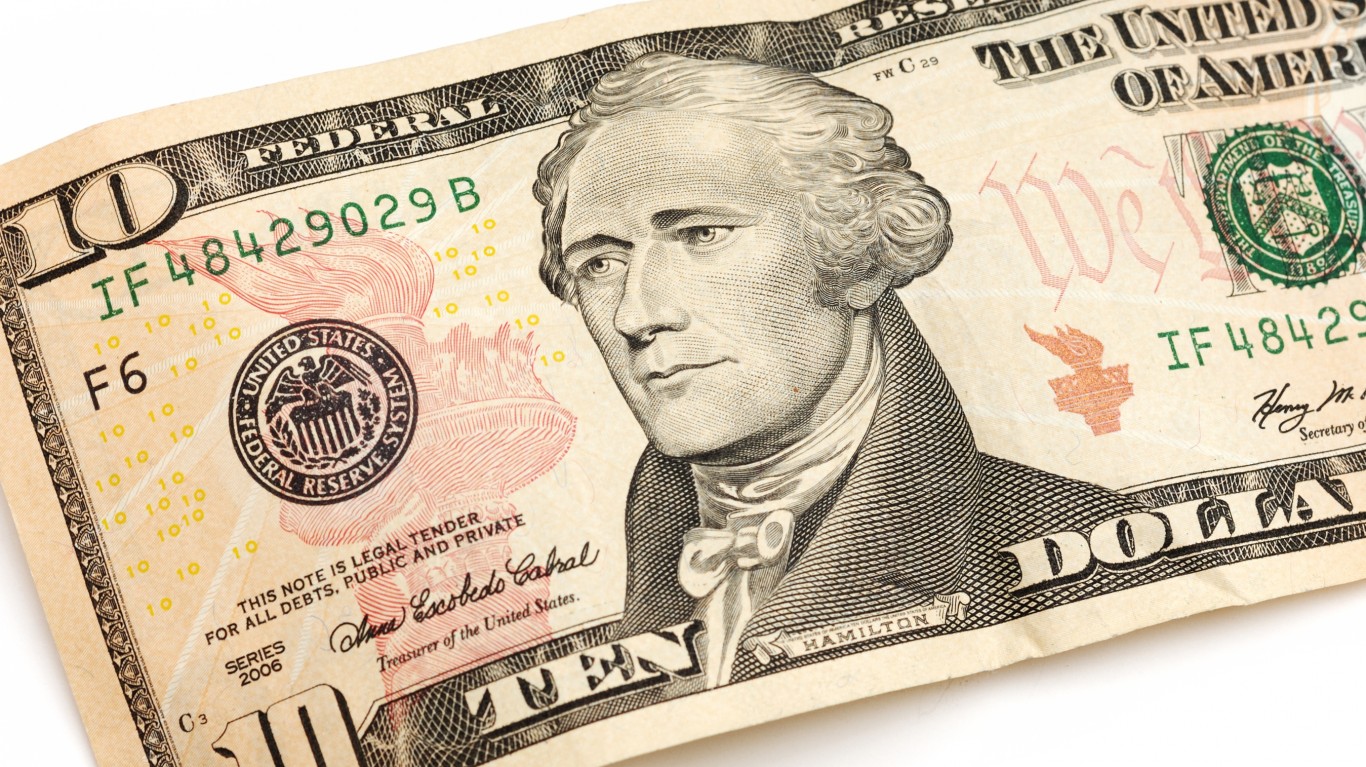 The markets have been roiled recently by the debt ceiling debate, the potential debt downgrade of the U.S., and the likely new recession that will come from the austerity measures. For now, the U.S.’s triple-A rating appears to be secure, but only temporarily. When we last covered the full list of nations that still have triple-A ratings from key credit rating agencies our point was simple: there are some strong triple-A nations and some weak triple-A nations. As of today, there are many more weak triple-A ratings than there were just six months ago.
The markets have been roiled recently by the debt ceiling debate, the potential debt downgrade of the U.S., and the likely new recession that will come from the austerity measures. For now, the U.S.’s triple-A rating appears to be secure, but only temporarily. When we last covered the full list of nations that still have triple-A ratings from key credit rating agencies our point was simple: there are some strong triple-A nations and some weak triple-A nations. As of today, there are many more weak triple-A ratings than there were just six months ago.
Moody’s has already affirmed the U.S. government’s Aaa rating, but with a negative outlook. Fitch also affirmed its AAA rating for the U.S., but warned that the rising debt profile to over 100% of GDP (after 2012) is not consistent with retaining the crucial AAA sovereign rating.
As a result of the weakening economy, and following the ratings agency actions, 24/7 Wall St. has decided to reassess the entire global triple-A landscape. Our previous take was that some nations already seemed to be far less deserving of the triple-A rating category than others. The key assumption here is that the U.S. is no longer a true triple-A- rated nation. This implies that other nations with similar conditions are also at risk of losing their triple-A rating, and that there are really far fewer than 17 true nations in the triple-A club now. Our review includes updated figures from Standard & Poor’s and Moody’s along with revised statistics from the CIA World Factbook. We’ve sourced also from the Economist Intelligence Unit, Fitch, Egan Jones, and elsewhere.
S&P still has a triple-A rating on Australia, Austria, Canada, Denmark, Finland, France, Germany, Netherlands, Norway, Singapore, Sweden, Switzerland, the United Kingdom, and the United States. Other triple-A nations like Guernsey, Isle of Man, Liechtenstein, and Luxembourg we left out due to their small size and dependence upon other nations. Moody’s ratings were also used to make sure that the discrepancies are not overlooked.
The writing is on the wall. The U.S. can still count itself as a triple-A nation, but not indefinitely and not even for too much longer. Even the newly agreed debt-ceiling deal will not keep a downgrade from coming at some point in the intermediate-term if the hints from the ratings agencies are serious. Keep in mind that Japan lost its AAA rating in the late 1990s. It was further downgraded earlier this year. It was as recently as 2009 that S&P cut Ireland’s AAA rating. Italy and Spain were both AAA rated in the 1990s, but Spain was actually raised back to AAA before losing it again in 2009.
Safe AAA:
1. Australia
> GDP per capita: $39,699.358
Australia was a solid AAA earlier this year and nothing has changed. Sure, it faces pressure from floods earlier this year, but the country is rich in natural resources that have to be used to build the world whenever the economy rises again. The low population of 21.5 million, an $882.4 billion GDP in 2010 projections, vast resource reserves, lower labor costs, and a low unemployment rate all act as a shield of global woes. Its public debt for 2010 was only projected to be 22.4% of GDP. The AAA rating is stable at S&P, and at Moody’s it’s Aaa with a stable outlook.
2. Canada
> GDP per capita: $39,057.444
Canada has a solid triple-A rating, and its deep trading ties to the U.S. does not jeopardize it, even if the U.S. has a troubled triple-A with a negative outlook. Canada has vast natural resources and its citizens mostly avoided the real estate and debt bubble that hurt the U.S. The population is under 34 million, its GDP is about $1.33 trillion, and public debt at the end of 2010 was a mere 34% or projected GDP. Neither Moody’s nor S&P have any issues with the triple-A ratings and stable outlook, and our take is that Canada is perhaps the safest triple-A rating of all nations in the Western Hemisphere.
3. Denmark
> GDP per capita: $36,449.554
Denmark has a relatively strong economy and claims a well educated population. The nation has a large dependence on foreign trade for goods and services and a small population of just over 5.5 million. Revised GDP data was put at $201.7 billion. What helped Denmark so much is that it had a surplus in its balance of payments before the government started spending to drive the economy. Its high property prices are a concern, as is a slowing trade environment. S&P has a solid AAA with a stable outlook and Moody’s has a Aaa with a stable outlook. The country has kept the Danish Kroner rather than officially joining the euro. Low birth rates, an aging population, taxation, immigration trends, and climate change are all risks for the small country longer-term by our count. However, Denmark has a sub-5% unemployment rate and a 2010 debt to GDP of only 46.6%. Denmark’s triple-A status remains firm here unless its services sector gets hit too hard with land prices all over again.
4. Germany
> GDP per capita: $36,033.284
Germany is still what we call “King of the Euro” with what is now just an undervalued Deutsche mark. With a population of 81.4 million and having the No.5 global economy, it cannot avoid leading the eurozone bailouts. GDP was $2.94 trillion in 2010 and its unemployment rate is healthy for a European nation. It also has a highly skilled labor force. The growing pains of absorbing East Germany are behind it and the ratings agencies bring no quarrel with its triple-A rating. Budget deficits, subsidies, tax cuts, aging population trends, immigration and the obvious leadership in eurozone bailouts do pose a risk. Still, public debt is tolerable at 78.8% of 2010 GDP. While any continued spending would pose longer-term risks, our take is that Germany will keep a triple-A rating longer than most nations.
5. Holland
> GDP per capita: $40,764.548
Holland, or The Netherlands, is in better shape than many eurozone countries. Its population is nearly 16.8 million and GDP is roughly $676.9 billion. A solid labor force, a surplus to its current account, and strong global industry all make it appear better than many eurorzone sister nations. High-tech exports, financial firms dominance, and its trade are all lags if and when the next recession takes hold. Budget deficits were high at 4.6% of 2009 targets and 5.6% of GDP in 2010 per earlier CIA data this year. Public debt is now projected at 64.6% of GDP and the ratings agencies have no current issues with the Dutch. Our take is that the triple-A rating has no severe risk as long as those dikes holding back the sea continue to work just fine.
6. Norway
> GDP per capita: $52,012.506
Norway has one of the best ratings going for it and the Economist Intelligence Unit gave it the only true AAA in earlier reports. The nation is rich in resources with a low population of almost 4.7 million people. GDP is highly dependent on the price of oil and was about $255.3 billion, and unemployment remains very low. Public debt was 47.7% of GDP. Norway is just about self-sufficient even if the climate of ‘welfare capitalism’ exists with close to 50% of exports being in oil. It also has the world’s second largest sovereign wealth fund valued at more than $500 billion. S&P and Moody’s have no issue with the triple-A ratings, and we view Norway as being just fine unless oil and fish suddenly go out of style.
7. Singapore
> GDP per capita: $56,521.731
Singapore is the sole Southeast Asian nation with a solid triple-A rating. Despite a reliance on foreign trade exports, investors consider Singapore the safest place today for Asia. Its population is tiny at 4.74 million and its revised GDP is $291.9 billion. Singapore did not avoid the recession, but it also proved to bounce back the most. Public debt is artificially high at 102.4% of GDP but that is a government tie of the Central Provident Fund. Imagine this for austerity measures: Singapore has actually not borrowed to finance any government deficits since the 1980s. S&P and Moody’s have no issues with the AAA rating and outlook, nor should investors. The only obvious risks are military action, climate change, or an unknown geological event. Barring those, Singapore has as solid of a triple-A status as they come.
8. Sweden
> GDP per capita: $38,031.484
Sweden is the largest of Scandinavian nations with nearly 9.1 million people. GDP was $354.7 billion per revised 2010 CIA data. Public debt in 2010 was 40.8% of GDP, shockingly low for Europe and Scandinavia. The nation was also not wrecked by World War II due to its neutral-nation status. Still, the country does rely heavily on exports; it was not immune from the recession; and it has reformed some financial policies while recovering. Immigration and population trends have been an issue, but the ratings agencies actually have no issue with its triple-A status. For that matter, we can’t criticize the triple-A rating at this point.
9. Switzerland
> GDP per capita: $41,663.047
Switzerland has only grown in standing since the woes of Europe and the world have grown in 2011. The solid triple-A status appears to be immune to the happenings around its border nations. The world’s banking center has actually had to warn that it might intervene if its currency strengthens too much more because it cannot export if other currencies keep falling. The mountain nation has a population of just over 7.6 million and 2010 revised GDP of about $324.5 billion. Unemployment is shockingly low; public debt is still at 38.2% per revised 2010 data; its taxation is rather low; its healthcare system is a blended mechanism; there are barriers to getting citizenship; and a sensible retirement model all combine to offer no real threats at all to the triple-A rating here. The world can drive itself to hell, and Switzerland dominates.
At Risk of Losing AAA Rating:
1. Austria
> GDP per capita: $39,634.128
We were surprised to see Austria has a triple-A rating with a stable outlook. Its business ties to the lands of the PIIGS and to Eastern Europe hurt its balance sheet. The country has a low population above 8.2 million and its 2010 GDP was roughly $332 billion per adjusted figures. The 2010 public debt ratio was 70.4% of GDP. Our take is that the ties to Germany may give it perhaps an artificial triple-A rating. The EIU said, even before the latest waves of weakening in trading partner nations, that Austria needs to continue restructuring, emphasizing knowledge-based sectors, move to greater labor flexibility, and grow labor participation to offset unemployment and aging trends and low fertility rates. Our own internal risk assessment is more critical than S&P and Moody’s and we just do no count Austria as a true triple-A in the European austerity path and with the the PIIGS nations facing so many woes, whether the European Union bails them out or not.
2. Finland
> GDP per capita: $34,585.453
Finland is a worrisome triple-A nation. It has a large landmass and a small population of about 5.25 million. It has a GDP of roughly $186 billion, a higher unemployment rate today, and a deep reliance on trade. Its precious technology sector is suffering with Nokia’s decline and the CIA Factbook noted that general government finances will remain in deficit during the next few years. Being rich in timber today does not weigh as much as being reliant entirely on imports of energy, raw materials, and many components for manufacturing. While 2010 debt to GDP was only 45.4%, it is easy to argue that this could skyrocket higher in hard times. Aging population trends, taxation risks, and that pesky Nokia problem all act in unison to keep us from considering Finland as a true triple-A nation.
3. France
> GDP per capita: $34,077.040
France is one of the world’s strongest nations and is the runner-up for Big Brother status in the euro. The population is now about 65.3 million and GDP was ranked as No.10 in the world at $2.145 trillion. France actually withstood the recession better than many other nations. But the CIA data showed that budget deficit rose from 3.4% of GDP in 2008 to 7.8% of GDP in 2010 with its public debt going from 68% of GDP to 84% over the same period. With France being a key guarantor in the EU and the woes of the PIIGS nations, France could easily find itself at-risk of losing its the triple-A rating. Its banks also own substantial U.S. debt. We still view the debt rating risks more harshly than the ratings agencies on a longer-term basis. Pension reform, tax reform, demographics, immigration, a high degree of exposure to bailouts, all combine with a very stubborn labor force to put France potentially under the same risk that the U.S. faces in the years ahead.
4. United Kingdom
> GDP per capita: $34,919.511
The United Kingdom has kept its triple-A rating since ratings were initiated. The third largest economy in Europe after Germany and France has a population of about 62.7 million and its revised GDP figure was $2.17 billion. England is in a funk even if the ratings are not under immediate fire. The Brits face property woes and S&P did actually give the nation a ‘negative outlook’ before reverting back to ‘stable’ in 2010. That puts our top allies at risk all over again if collateral damage comes from the U.S. Our banking systems have many overlaps. One risk is that while it has coal, natural gas, and oil resources, reserves are declining and it is now a net importer of energy.
The U.K.’s revised public debt to GDP was left at 76.5%. The financial meltdown and property crash was brutal in England, perhaps even more so than in the U.S. Taxation issues are ongoing, along with risks of bank nationalization, unavoidable austerity measures, rising debt, deficit spending, and urban immigration remain — all present large challenges in the intermediate-term and in the long-term. What has helped to save England is that it stayed out of the euro, so it can print pound sterling if needed. Still, the U.K. has nearly all of the same risks as the U.S. has for its triple-A status, which puts it at real risk.
5. United States
> GDP per capita: $47,283.633
The United States has so far managed to technically escape the triple-A downgrade hangman. For now. This is the trickiest of all triple-A rating analysis, and it is relatively easy to argue that the triple-A rating here is actually a manipulated rating. For a ratings agency to downgrade the U.S., some will claim that there is no such thing as a triple-A rating. Both political parties have deep responsibility in having helped to torpedo the financial standing of the nation. Fitch and Moody’s have both keyed in negatively about the long-term triple-A prospects, and S&P wants even more budget cuts ahead.
The world’s biggest economy has a population of 313 million and revised GDP figure of $14.66 trillion. Moody’s warned back in December 2010 that the nation faced credit negative forces. The warnings have only grown. Public debt was not as high in 2010 at only 58.9% of GDP per the CIA data. But that was then. High deficits, declining tax revenues, and current entitlement demands will drive this far higher. It was immediately after the debt ceiling was lifted that Fitch opined that this only one step; that the process has not ended; and that the rising debt profile to over 100% of GDP (after 2012) is a “not consistent with the United States retaining its AAA sovereign rating.”
The pains of healthcare and social security reform; the argument that the recession never really ended and is coming back; a worsening employment situation; unrealistic entitlement expectations of the public; continued property value declines; still high deficit spending; military spending obligations; a crumbing infrastructure; a refusal to increase tax revenues of any form whatsoever; a historically short debt-maturity schedule with artificially low rates; and a few dozen more issues all jeopardize the U.S.’s highly cherished triple-A ratings status. The U.S. is under review by ratings agencies, and the economy is literally softening under our feet.
This is said with sadness, but the ratings agencies have already begun the U.S. downgrade process. The rest of the process is only up to whether or not Washington and the public can reach down and accept the notion that less is more in the end. The coming changes required will mean that Warren Buffett’s predictions of a greater future have no merit.
**************
After you have reviewed the nations with triple-A ratings, the reality is much more sobering than it was even six months ago. The United States has been a large part of the ratings woes, but Europe shares in much of the blame. The post-austerity world is going to create new winners as well as some losers. The global business climate is challenging, at best.
This article was written by a concerned American who tried to leave political views at the door. The ratings agencies did no favors before the recession took hold and they are doing no favors today. Still, a look in the mirror and action by all economic participants from the very bottom to the highest level is still needed. A triple-A rating just does not have the same meaning that it used to. If you think that S&P and Moody’s won’t downgrade the U.S. and other nations, think again. Egan Jones has already formally downgraded the U.S. from a triple-A rating.
JON C. OGG
Sponsored: Attention Savvy Investors: Speak to 3 Financial Experts – FREE
Ever wanted an extra set of eyes on an investment you’re considering? Now you can speak with up to 3 financial experts in your area for FREE. By simply
clicking here you can begin to match with financial professionals who can help guide you through the financial decisions you’re making. And the best part? The first conversation with them is free.
Click here to match with up to 3 financial pros who would be excited to help you make financial decisions.
Thank you for reading! Have some feedback for us?
Contact the 24/7 Wall St. editorial team.



